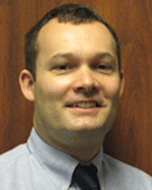Innovative EM MWD technology facilitates exploitation of unconventional reservoirs*
Jim Coghill A , Jonathan Lee B , Graham Miller C , Ma Zhe D , Liu Qinglong E and Rosano SosrohadisewoyoA GE Energy Walton Road, Kirkhill Industrial Estate, Dyce, Aberdeen, Scotland. Email: jim.coghill@ge.com
B GE Energy 13000 Executive Drive, Sugar Land, TX 77478, USA. Email: jonathanD.lee@ge.com
C GE Energy Walton Road, Kirkhill Industrial Estate, Dyce, Aberdeen, Scotland. Email: graham.miller@ge.com
D GE Energy Kerry Center No. 1, Guanghua Road 18F & 24F North Tower, Chaoyang District, Beijing 100020, P.R. China. Email: zhe.ma@ge.com
E Sinopec Corporation No.827 Beiyi Road, Dongying City, Shandong Province, P. R. China 257017. Email: liuqinglong08@gmail.com
The APPEA Journal 50(2) 680-680 https://doi.org/10.1071/AJ09044
Published: 2010
Abstract
Electromagnetic wave measurement while drilling (EM MWD) systems have historically seen less widespread use compared to mud pulse telemetry due to inherent limits—notably depth and formation characteristics and the limited capability for offshore applications. However, the rapid growth of unconventional applications, such as shale gas reservoir development, underbalanced drilling (UBD) and coalbed methane drilling (CBM) has resulted in an increased need for EM MWD systems.
EM MWD systems have the advantage of no moving parts, which result in the potential for improved reliability compared to mud pulse telemetry systems. In addition, such systems are independent of the rig circulating system, with less time required to make connections, leading to better hole cleaning. It is also possible to drill ahead immediately after the connection is made without losing information from downhole, as no circulating media is required to transmit the data.
Despite these advantages the use of EM MWD has limitations. System performance is limited to depth, specifically true vertical depth (TVD). Signal reception at the surface depends upon the characteristics of the various formations through which the signal is transmitted from downhole, notably formation resistivity.
The authors describe an EM MWD system incorporating a number of features that overcome challenges normally associated with such systems, including variable transmission formats to adapt to a well’s specific conditions, a flexible surface antenna array to optimise signal detection and methods of reducing downhole shock and vibration. Along with a description of the system, case studies from differing geographical locations will demonstrate its effectiveness.
Keywords: EM MWD, air drilling, shale gas, coalbed methane, underbalanced drilling

Jim Coghill has 25 years of experience in the oil and gas industry, his roles have included various field, operations and product management positions with GE, Baker Hughes and Halliburton. He has extensive experience in MWD and LWD applications; his global experience includes positions in Europe, Africa, Middle East, North America and Asia. Jim has published several papers in SPE and SPWLA on LWD applications and he is currently MWD Product Line Leader with GE Oilfield Technology. Jim has a BSc (Hons) in electrical and electronic engineering from the University of Edinburgh, Scotland. |

Jonathan Lee, LWD Product Line Leader at GE Energy Oilfield Technology has 20 years of experience in the oil and gas industry. Jonathan’s roles have included working as a mud logger based out of Windsor, England and as an MWD field engineer with Baker Hughes INTEQ based in Aberdeen, Scotland. He moved to Houston in 2000 as a field test engineer for nuclear logging while drilling tools and performed several marketing and product line roles with INTEQ before moving to GE in September 2007. He earned his BSc (Hons) in Geology at Cardiff University in Wales. |

Graham Miller has worked in M/LWD operations since 1984 after a period as a mud logger/pressure engineer. He has worked for Schlumberger, Gearhart and Halliburton and is currently the senior Training Coordinator for GE Energy Oilfield Technology Drilling Measurements based in Aberdeen, Scotland. His experience includes the rigsite operation and field maintenance of M/LWD equipment, contract commissioning and customer training in all aspects of the ownership of GE M/LWD tools. These duties have taken him to diverse locations including UK N. Sea, China, North and South America and the Middle East. He holds a BSc (Hons) in engineering science from the Aberdeen University. |

Mr Ma Zhe graduated from Jianghan Petroleum University with a bachelor degree in logging technology. He has 15 years’ experience in MWD/LWD field application research and has published papers extensively in Chinese technology journals. He was the vice director of the Drilling Measurement Tools Research Department in the Drilling Technology Research Institute (SDTRI), Shengli Petroleum Administration and has acquired the senior engineer title award by Shengli Petroleum Administrative Bureau. Ma Zhe is presently the sales manager of GE oilfield technology. He is currently studying for an engineering master’s degree in the field of drilling measurement. |

Mr Liu Qinglong graduated from the University of Petroleum, China with a bachelor degree in electronic engineering. He has worked for the Drilling Technology Research Institute of Shengli Petroleum Administration, Sinopec Corporation (SDTRI) for 17 years. Mr Liu Qinglong began his career as a field MWD/LWD engineer, and has had great experience of MWD/LWD tools application and research. He is presently the director of the Drilling Measurement Tools Research Department in SDTRI. |

Rosano Sosrohadisewoyo has 20 years of experience on the oil and gas industry. His roles have included various field, operations and management positions with Baker Hughes and General Electric. He has extensive experience in formation and reservoir evaluation. His global experience includes positions in southeast Asia, India and West Africa. Rosano has published several papers in IPA (Indonesian Petroleum Association) and he is currently the Asia Pacific Region Manager for GE Oil & Gas in the Oilfield Technology division. Rosano has a BSc (Hons) in mechanical engineering from Bandung Institute of Technology, Indonesia. |


